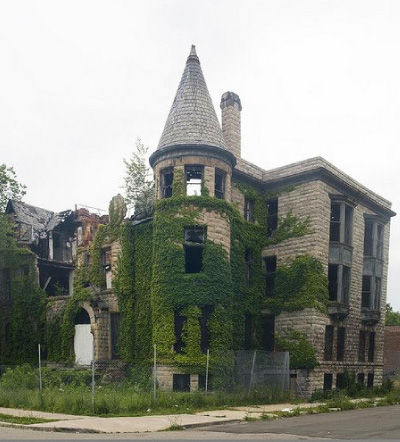
Perhaps you grew up in a tree-lined, middle-class suburb outside of Cleveland, tiptoeing past a dilapidated Gothic Revival on the way to the bus stop. Perhaps you came of age near New York’s BQE, eyeing weathered, unoccupied row houses with suspicion. Wherever you were, there was a good chance that an abandoned, spooky old house — its lawn gone to seed, its windows boarded — waited for you around the corner or at the end of the lane. Maybe you had the nerve to sneak in or perhaps you just watched sentimentally as the elements turned its walls and wood into something more fascinating and feral. Now imagine that house not being the exception in your ‘hood, but a growing norm.
In cities across the country, the diving housing market and industrial downturn have had families on the run and leaving properties behind. In Flint, Michigan, Oakland, California, and even Brooklyn, rows of houses that have remained vacant since the mid-90s have welcomed new occupants – ivy, trees, and ruin. As GM and the other manufacturing giants slashed workforces over the last 20 years, the communities around these industrial centers have become eerie memento mori to bygone times when work was plenty, mortgages were cheap, and blue-collar communities thrived. Now the thriving in areas of Detroit and other cities is done by nature.




 Facebook
Facebook Permalink
Permalink Digg
Digg Reddit
Reddit LinkedIn
LinkedIn StumbleUpon
StumbleUpon Tumblr
Tumblr

